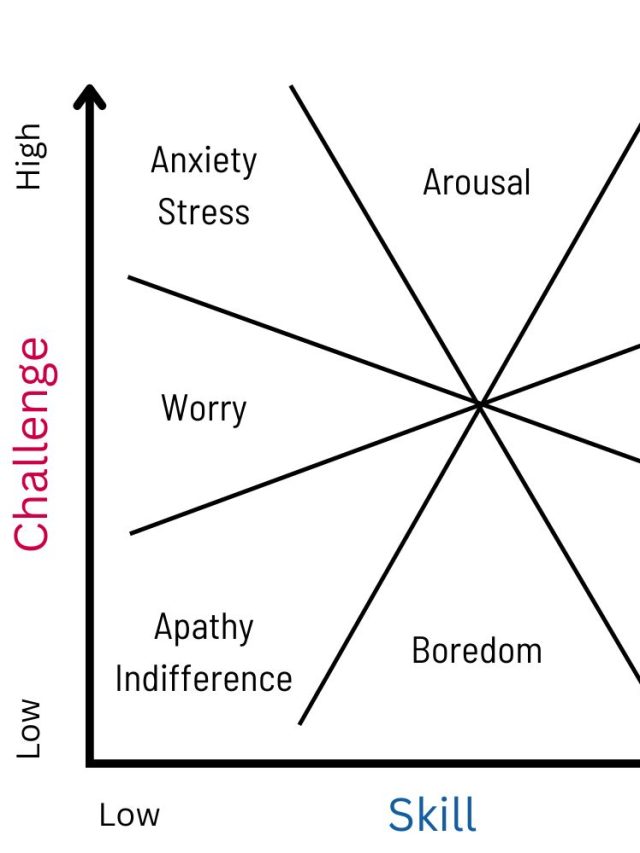Research shows[1] that self-talk, when done in 3rd person, can be an effective method of emotional self-regulation that can reduce anxiety. Converting your anxious/negative thoughts into third-person sentences reduces its negativity. It provides the necessary psychological distance between the self and anxiety-inducing contexts. This also helps when you are thinking about negative events and ruminating anxiety-ridden thoughts. The psychological distance allows a person to reflect on themselves in a less emotional way, similar to how they would reflect on some other person. The self is often emotionally charged in moments of anxiety, so the distance helps in reducing the impact of those emotions. Psychological distance lowers the perceived intensity of emotions and makes them easier to manage.
When you are angry or anxious, you can externalize and weaken emotions by talking in the 3rd person! Instead of I, using pronouns will create psychological distance that weakens the emotion. Click To TweetPsychologists also call this technique “distancing” (a type of cognitive change) and recommend it to reduce the negative impact of emotions and down-regulate negative reactions to stressful experiences.
The process is straightforward. Instead of ‘I, me, and we’ you can use ‘Your name, he, she, them.’ Here is an example – ‘I am disgusting‘ can change to ‘Aditya is disgusting.’ Another sentence that could work is ‘He is disgusting.’
Talking with yourself while introspecting and speaking with your own internal voice while undertaking a difficult task forms a large portion of self-talk. When emotions and/or anxiety colors these internal thoughts unfavorably, changing your internal voice to the third person can be quite valuable. Look at Terry Crews from Brooklyn 99, for example. If your inner voice in stressful situations is like Terry Crew’s, you already have a good start!

Here are some examples of self-talk using 3rd person pronouns and your own name.
- Aditya is stupid AF and he is constantly judged for his crappy content. (negative self-talk)
- Aditya can’t small-talk and that makes every social situation awkward. (negative self-talk)
- She is pathetic in planning a trip and the trip is doomed to fail. (negative self-talk)
- She can do it and just needs to relax for a minute and then speak. (positive self-talk)
- He has faith in himself and he can totally make this high-value sale. (positive self-talk)
- We are a bunch of weirdos who have now grown to be mature adults. (negative to positive self-talk)
Not all of these sentences represent everyone’s self-talk. Self-talk is subjective and there are many different ways to change your self-talk. You can reflect on how you do it and then change the first-person elements to third-person elements. Self-talk is very close to self-affirmations – things we say to ourselves to affirm some aspect of our psyche. You might find this article on how and when self-affirmations work (or don’t work).
This linguistic shift can deliberately create some psychological distance to promote emotional regulation.
In case you are wondering, emotional regulation is the ability to resolve, manage, handle, cope with, and modify emotions for desirable outcomes.
Anxiety leads to and is comprised of emotionally charged thoughts. There is a tonne of self-referential (addressing yourself) behavior and self-talk. This technique seems very promising as a handy mental tool to alleviate anxiety, gain emotional clarity, and lower stress in anxiety-inducing situations.
You should know something else about this psychological distance I am talking about. This is a function of a broader theory called the construal level theory. Simply put, construal level theory describes the level at which one can understand psychological events. Construal levels can range from high to low. It describes the level of details at which you process something – also known as “psychological distance.” You can assess the construal level by asking – “How closely am I looking at things?” and “How close am I to mental things?” Third-person talk removes you from your immediate “self” and changes the construal level.
An overview of the construal level theory
- Construal level posits that people construe/understand events (psychological and physical) at multiple levels, distances, and depth
- It is the level at which mental events are construed
- People use different terms to depict events at a certain level of perception ranging from precise to abstract
- A low construal level forms a tight reliable cluster of information – names of fruits
- A high construal level forms a wide and loosely connected cluster of information – eatables
- A high construal level has a wider reach in how concepts are interlinked in the mind’s conceptual space – like the index of a book
- A low construal level has a narrow but focused reach in how details are linked within, or closely around, a concept – like a chapter of a book
- The construal level of a situation, experience, memory, thought, emotion, and behavior has an influence on one’s wellbeing and cognition.
Examples of high and low construal levels
| Low Construal Level | High Construal level |
| I am going out to play football with Megatron, Kung Fury, and One-Punch Man. | I am going out to play sports |
| I am listening to Taylor Swift’s newest song on Spotify | I am listening to music |
| My boss has given me the task of generating 4 proper leads this month. | I have work to do |
| A scenery painting with visual clarity | A vague abstract painting |
| Music | Noise |
| Thinking about your present self | Thinking about your future self |
| Recalling details of an event | Recalling a surface layer impression of an event |
| Thinking about the activities needed to realize your goals | Thinking about the goals |
Characteristics of high construal level: Abstract, Vague, Physically distant, High temporal distance, Obscured, Captures the essence, Increased psychological distance
Characteristics of low construal level: Concrete, Specific details, Physically near, Low temporal distance, elaborates on details, Decreased psychological distance
High construal level describes something in a global, general, and abstract way – I am enjoying sports right now. The details are vague but the essence is captured. This creates high psychological distance.
Low construal level describes something in a local, specific, and concrete way – I am enjoying Novak Djokovic’s French open. This creates low psychological distance.
The application of construal levels for self-talk and emotional regulation
Research demonstrates[2] that a high-level construal makes it easier to exert self-control and emotional control. It also leads to less positive evaluations of activities that undermine self-control. That means you’ll see harmful activities (like addictions) in a more negative light, so it’ll be easy to consider them as bad activities. This, in turn, encourages healthy coping mechanisms and reduces impulsivity.
The takeaway from the CLT is that if you want to exert emotional control and regulate emotions, increase the construal level at which you process ideas, events, thoughts, and feelings, and behaviors. That means focus on global, superordinate (sports vs. specific game), and abstract events. The lower the construal, the more likely you are to negatively evaluate things, overthink, and experience emotional distress.
Research shows that thinking about emotionally loaded thoughts in an abstract and global way is better for emotional well-being than thinking about them with extreme details. Click To TweetThis isn’t just a casual theory, it’s one of the best we have from psychology which makes accurate predictions about everything ranging from creativity[3] to well-being[4].
Another point I’d like to mention here is how people evaluate emotions. We need to consider the essence of emotions which many psychologists call affect – is the emotion good or bad? I am feeling right or wrong? This is a simple dichotomy, but it is of a high construal. I suspect people engage in such a pattern of thinking partly because it creates space between the self and the anxiety-inducing event.
One study pointed out that differentiating emotions at a high construal (good vs bad) as opposed to low level (irritability, frustration, context, personal details, actions, who said what, trying to read between the lines, nuances, etc.) improved intrinsic motivation at the workplace during times of distress. This indirectly creates a buffer against emotional distress due to weak motivation. The paper[5] discusses how people who are unable to distinguish between nuanced differences in emotions experience more intrinsic motivation than those who can differentiate between nuances.
The details with which you process experiences affects your emotions and anxiety. More details can lead to more anxiety and overthinking whereas lesser details help regulate emotions. Click To TweetAn important part of emotions is considering their usefulness. Anxiety, anger, and frustration can all be useful in some sense. A healthy part of emotional regulation is how emotions are preferred and utilized. You can ask yourself a few questions – is it useful to feel anxious in a particular situation? Can it help you achieve what you need to? Can anger facilitate growth, etc.?
A valuable piece of insight comes from a study[6] that shows that people prefer emotions which are more useful if they construe a situation at a high level instead of a low level. The increased psychological distance by activating a high construal level motivates people to experience emotions that are useful to their goals. The study focused on anger and not anxiety, so it is a little unclear how generalizable this finding is. However, it is fair to predict such a preference for useful negative emotions at a high-level construal because of the underlying mechanisms, which are well-tested[7].
The finding that introspection and self-talk in the 3rd person (including using your own name) reduces anxiety is not just a stand-alone finding. Seven other studies (including a meta-analysis) show[8] that using third-person pronouns during introspection can increase psychological distance and reduce the threatening nature of anxiety-inducing situations. The studies also found that trait-level social anxiety does not mediate this effect. That means that even if you are socially anxious by nature, this change in thinking can be useful in reducing anxiety and stress.
Other findings from the same set of studies done on 500+ people show that non-first person introspective self-talk can be helpful in regulating stress about public speaking and making first impressions. The increased construal level via third-person self-talk can help to appraise future stressors (a common feature of anxiety) in a more challenging (actionable) and less threatening way. It also helps in dealing with anxiety-ridden and stressful situations in a less maladaptive way.
This insight is corroborated by another finding[9] where 3rd person self-talk reduced worry and increased rational thinking. The study focused on the perceived threat of Ebola and its risk during the 2014 outbreak panic (1257 participants from the United States). Those who made the linguistic change to 3rd person were able to assess their own risk rationally and this rationality reduced the emotion-based worry. The paper highlights how people can manage important public sentiments regarding outbreaks and diseases.
Introspecting in the 3rd person is a powerful way to regulate your emotions and reduce anxiety, stress, and emotional overthinking. Click To TweetSelf-talk and depersonalization
Psychologists describe depersonalization as the feeling of being detached from one’s own thoughts and body.
Does speaking in 3rd person lead to any level of depersonalization? Well, to be honest, there is no direct answer, but it appears that the answer is close to a ‘no.’
However, research demonstrates[10] that people suffering from depersonalization tend to avoid first-person pronouns. Researchers link depersonalization with a lack of self-awareness via multiple mechanisms – lack of knowledge, denial, avoidance of responsibility and ownership, etc.
There is no causal link established between 3rd person self-talk and depersonalization, but there is evidence[11] which shows that self-detachment (high construal level) creates a buffer against emotional exhaustion. A mild degree of self-detachment within a small time period does not predict depersonalization, so it is fair to assume that the risk of depersonalization doesn’t change with occasional coping via increased construal levels.
Ideally, 3rd person self-talk is NOT to be used as a go-to thinking style. It is to be used as a mental tool to regulate emotions while overthinking, ruminating, and experiencing emotional distress. This includes coping with crippling anxiety and readying oneself to face emotionally loaded situations.
Once the 3rd person self-talk begins, it becomes easier to think rationally, think without overthinking, reduce anxiety, and engage in healthy emotional regulation. It makes you an observer of your thoughts. You might be interested in more techniques to control emotions and thoughts, here is a list of cognitive defusion techniques which would help.
P.S. Needless to say, this technique is not a cure for anxiety disorders, it is a healthy coping mechanism and a useful technique for emotional regulation. Please consult a mental health professional if you are suffering from mental health issues which you cannot handle by yourself.
Sources
[2]: https://www.ncbi.nlm.nih.gov/pmc/articles/PMC3153425/
[3]: https://www.ncbi.nlm.nih.gov/pubmed/15301626
[4]: https://psycnet.apa.org/record/2003-09138-012
[5]: https://journals.plos.org/plosone/article?id=10.1371/journal.pone.0115396
[6]: https://www.sciencedirect.com/science/article/abs/pii/S0022103116308526
[7]: https://psycnet.apa.org/buy/2010-06891-005
[8]: http://selfcontrol.psych.lsa.umich.edu/wp-content/uploads/2014/01/KrossJ_Pers_Soc_Psychol2014Self-talk_as_a_regulatory_mechanism_How_you_do_it_matters.pdf
[9]: https://onlinelibrary.wiley.com/doi/abs/10.1111/aphw.12103
[10]: https://onlinelibrary.wiley.com/doi/abs/10.1111/ejop.12168
[11]: https://www.tandfonline.com/doi/abs/10.1080/15426430802114051

Hey! Thank you for reading; hope you enjoyed the article. I run Cognition Today to paint a holistic picture of psychology. My content here is referenced and featured in NY Times, Forbes, CNET, Entrepreneur, Lifehacker, 10-15 books, academic courses, and research papers.
I’m a full-time psychology blogger, part-time Edtech and cyberpsychology consultant, guitar trainer, and also overtime impostor. I’ve studied at NIMHANS Bangalore (positive psychology), Savitribai Phule Pune University (clinical psychology), and IIM Ahmedabad (marketing psychology).
I’m based in Pune, India. Love sci-fi, horror media; Love rock, metal, synthwave, and pop music; can’t whistle; can play 2 guitars at a time.










